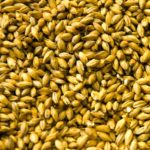
Lygus bug: Profile of a crop pest

Lygus bugs: know when to spray them
Researchers are revisiting economic threshold recommendations on spraying these bugs

Be ready to scout and control flea beetles
Flea beetles move fast and do a lot of damage. Be sure to keep ahead of them in your canola crops

Scout early for best cutworm control in canola crops
Cutworms may be poised to damage the 2017 canola crop. Be on the lookout for them

Pea leaf weevil moves into new territory
Pea leaf weevils are on the move. Know what you can do about them

Want better insect surveys? Here’s how you can help
Provincial entomologists are looking to widen their insect survey networks

Vigour tests recommended for wheat and barley
Last fall’s harvest may have left some wheat and barley seed less than ideal

Narrow-leaved hawk’s beard travelling
This noxious weed is spreading outside of northwest Sask. and the Alta. border

When to spray cabbage seedpod weevil
If you have to spray for the cabbage seedpod weevil, get the timing right

Controlling cleavers without quinclorac
With quinclorac off of the herbicide menu, farmers will need to use other tools


